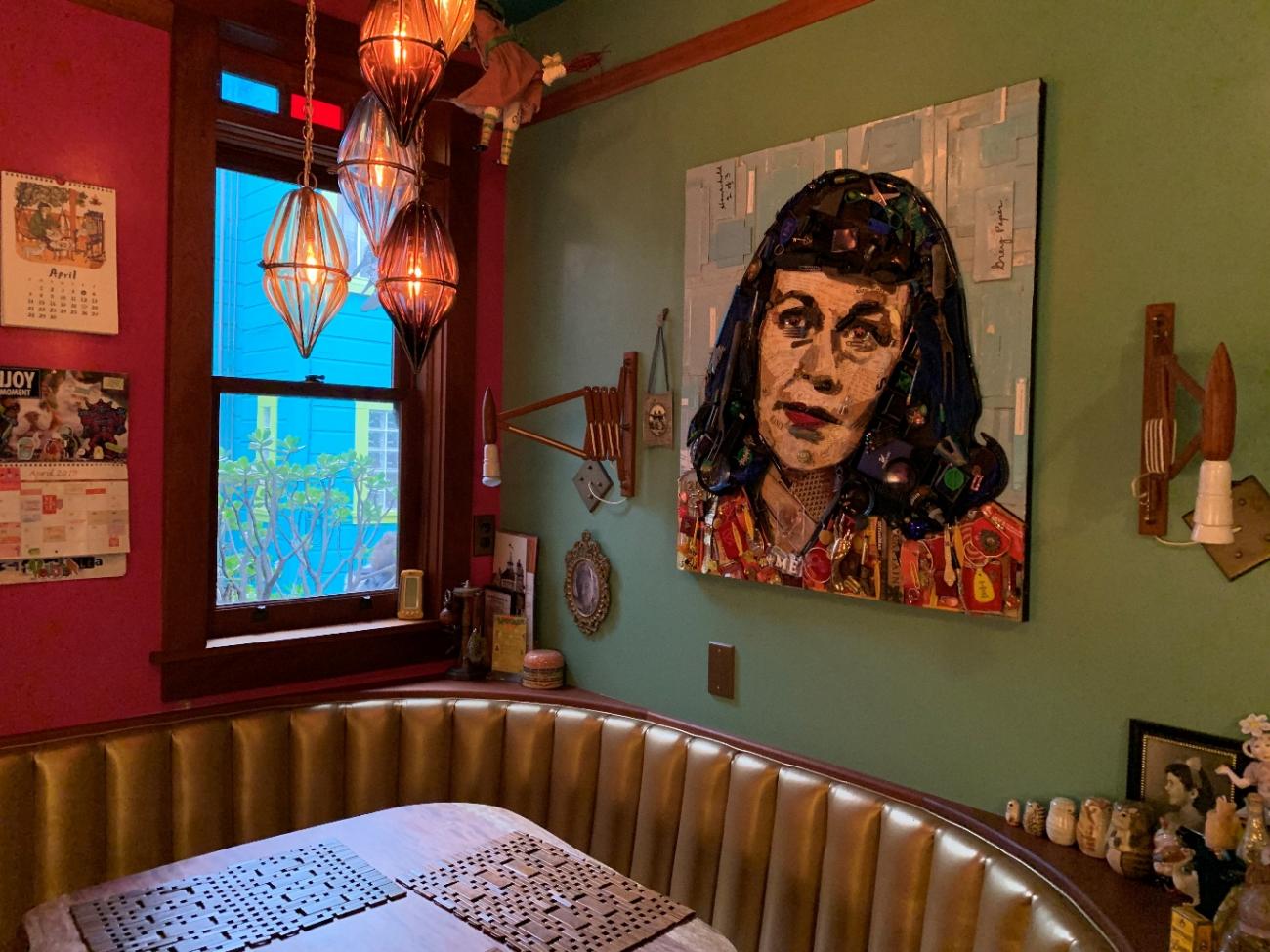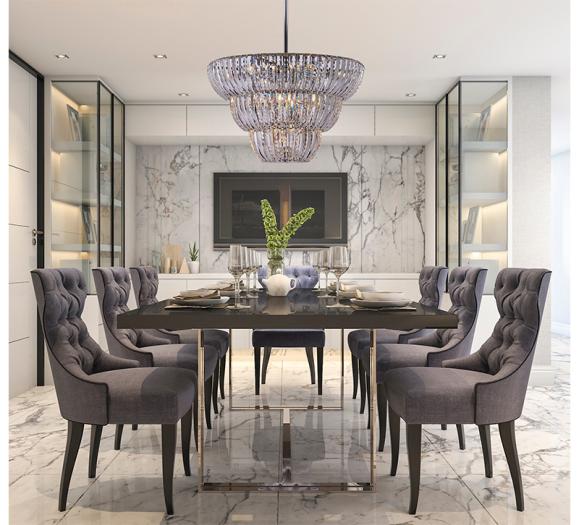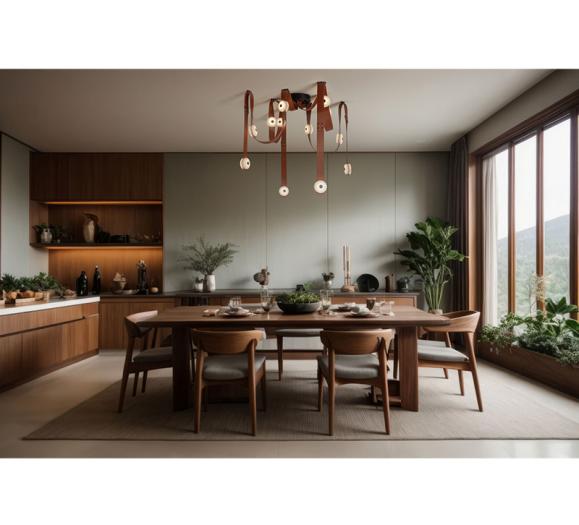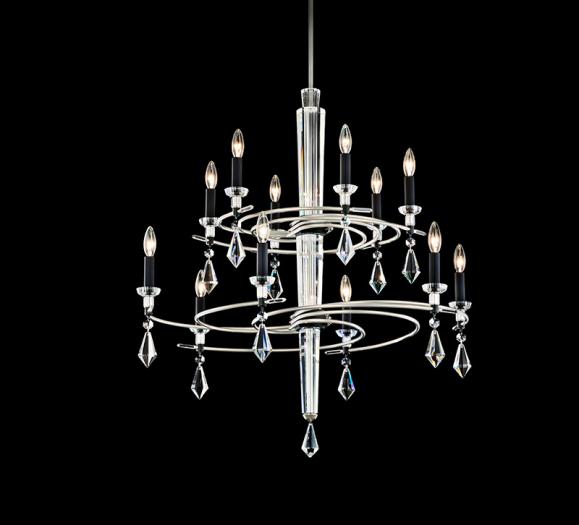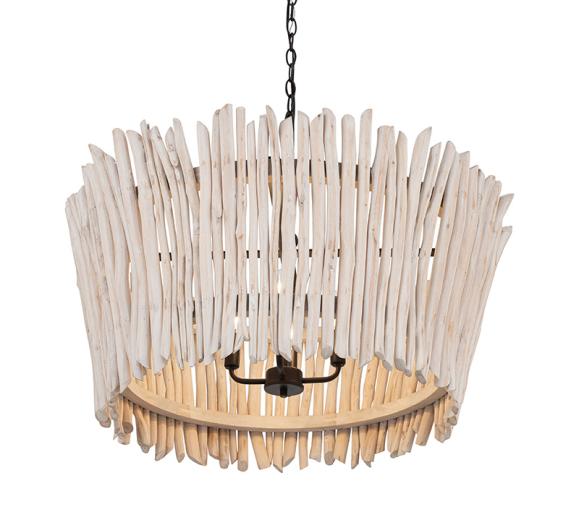While we were all bingeing on Netflix there was one couple who were turning their home into an environmental art project. From the outside it is unassuming Victorian cottage. Once you open the front door it turns into a creative cacophony of color and texture, which becomes more and more magical as you pass from room to room. It is all done with a clever reuse of materials and subtly integrated lighting.
The large kitchen is the main gathering area. A reclaimed booth from an old restaurant provides generous tuck-and-roll seating. A cluster of pendant fixtures hangs in the corner. LED filament bulbs were selected because they have the look of the old-fashioned Edison bulbs, but are much more energy efficient and produce less heat than the incandescent versions. They selected a color temperature of 2400 K (the color of dimmed incandescent) with a CRI of 90. Using LEDs helps increase the longevity of the silk shades. In addition, a pair of mid-century scissor-arm fixtures are mounted on either side of the painting. They provide flexible reading light. LED reflector bulbs are used. If you look closely you will see that the painting is made up entirely of recycled materials, including plastic toys, key chains and rifle shells.

The bathroom is spectacular. It is shaped like the inside of the submarine, with a curved ceiling and walls, along with a reclaimed porthole as a window. The undersea mosaic, which covers all the walls and ceiling, is made from leftover decorative tiles, mirrors, and dishware. It took two people working almost every day for a period of two months. The periscope shows a film loop of a 1960s couple water skiing. Recessed adjustable low voltage fixtures were used to illuminate the scene. A cooler color temperature (3,000 K) was used to enhance the hues and the underwater feel.

This is just a small detail, but I want you to imagine the walls of an entire two-story staircase covered from floor to ceiling with art made entirely from leftover pencils, pens and erasers. It is spectacular. Tiny LED light sources are tucked in behind architecture details to provide illumination. It is amazing how refuse can become art. Certainly, I’ve seen sculptures and paintings made from recycled and salvage materials, but I’ve never seen a piece of art that you can actually live in.

Here’s another detail from the stairway landing. If you look closely you can see poker chips, bottle caps, plastic toys and costume jewelry. Using an LED source with a high CRI offers more sparkle and visual richness to the illumination which in turn enhances the art.
That is incredibly inspiring to see what these people have done during the shelter-in-place proclamation. Creating something so unique and memorable within the confines of their living space. I wonder if the exterior of the house will be next.



